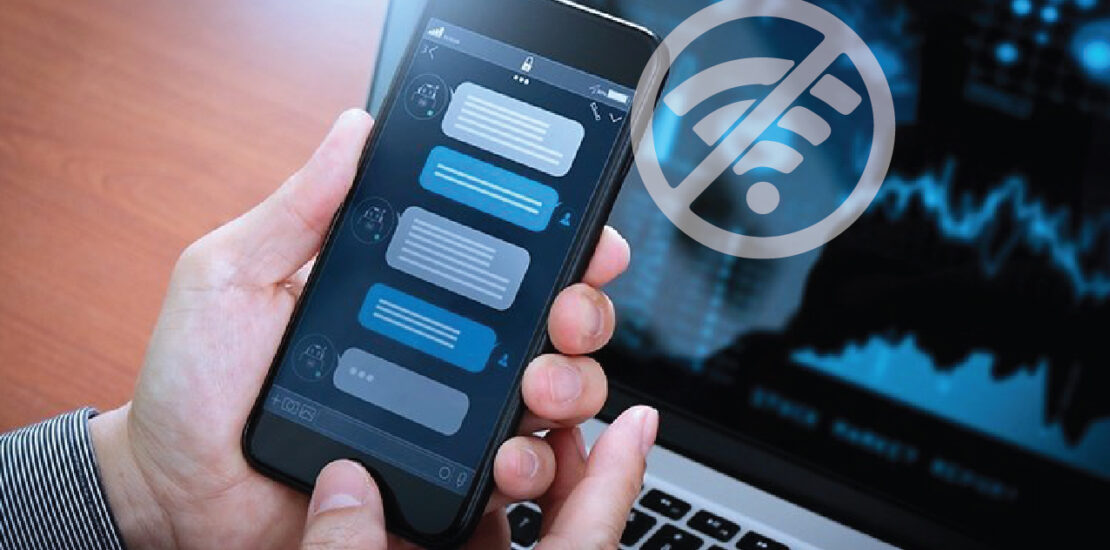- July 19, 2021
- Posted by: Acarin_user
- Category: Blog

Today, the offline mode has become one of the must-have functionalities of mobile applications. You see, with mobile apps, user experience is everything. It has a huge impact on the success of your app. If users can’t use your mobile app due to a poor network, it can lead to a bad user experience.
What is Offline mode?
Offline mode limits a user’s inconvenience when the internet connection is lost or intermittent. Offline mode is a feature that allows users to access mobile apps without the Internet. Now, it doesn’t mean that users will be able to access these apps in offline mode forever. The apps will need an Internet connection at some point to enable data synchronization.
Why implement Offline mode in your app?
You might be wondering how these offline apps are going to help your business, apart from allowing customers to access your app without the Internet? Here we have a list of reasons why you must build your business apps that works offline
- Get a competitive edge: There are various factors based on which users select one app over the other – functionality, performance, UI, and UX. Launching an offline app over the online app or adding an offline feature to your app can give you a competitive advantage.
- Improved customer loyalty: Adding offline functionality to your app will make your users more loyal to to your app
- Users can access their data, regardless of an internet connection
- The app becomes faster & loads quickly
- Offline apps are less likely to consume your phone’s battery
- Saves mobile battery power: While travelling, users particularly face battery drainage of their phones with prolonged network connection. Offline compatible apps with a fast loading speed, and efficient data storage management, result in the phone’s battery saving.
- No roaming expenses: A roaming data plan is used while traveling in other countries or states and is expensive. An offline feature in your app can save you money and data at the same time.
Typical Use Cases for Offline mode apps
- On-demand delivery: Even if he knows his way, he has no way to report back to the employer or to communicate with the client in case:
- He can’t find his way into the apartment building.
- He is caught in traffic and is late.
- Online cash transfers: Imagine you urgently need to make a money transfer to your friend. And you’re in a building with a poor connection. With the offline mode, you will enter all the transaction details and make the transfer. The app will complete an actual transaction later as soon as the connection is re-established.
- E-commerce: Suppose you have a supermarket shopping app that you are trying to use in the basement of a friend’s house, where the Wi-Fi signals are intermittent. With a traditional online app, filling the cart requires the app to go back and forth to the server at regular intervals, but it’s slow and frustrating because of the poor connection.
- File uploads: File uploads do not stop entirely in the offline mode. Using an offline app, file uploads are queued-up when there is no connectivity and are uploaded automatically as soon as it finds the connection.
- News portal: Commuting time provides many of us the perfect time to catch up on the stories of the day with our favorite News App.
How to Implement Offline Mode in Your App?
Things to take care of while implementing offline mode in your app:
- Show a proper use interface for the offline state: Clear communication, they say, is the key to a successful customer experience strategy. This must be kept in our minds when designing the user interface for the offline state. You must:
- Remember, offline is not an error state.
- Use the app’s skeleton (minimal UI framework) to decide what to show to users.
- Notify the users when the app detects low or unavailable network conditions.
- Not show error messages that are nothing more than jargon
- Make Static Information Available: In the apps that work with limited connectivity, the static information gets downloaded and stored locally when it first loads. This data is not modified frequently.
- Create a Cache of Commonly Used Dynamic Data: As compared to static caching, dynamic cache data is expected to be updated frequently. To enable this in a limited or zero connectivity environment, users’ information is stored temporarily in the local cache
- Real-Time Data Synchronization: Modern apps have gotten their users accustomed to automatic data synchronization that runs in the background. The user in this is not bothered about data updates. It is convenient for users, and users expect it as a standard in all cases. But this approach is not feasible in offline cases where the app will be in an inconsistent state because of long sync processing time. It is best to use the manual data synchronization process, which the user can control.
How to Implement Offline Mode in Your App?
It’s essential to select the right technologies while developing your offline app. Pay attention to and consider the following when making the big decision about technology use:
1.Data Synchronization – Frequency
When a mobile app is used offline, you must sync certain actions and data with the server. This syncing happens whenever an internet connection is available.Reconnecting to the Internet and syncing too often will drain a phone’s battery. But if an app synchronizes only occasionally, users might miss some essential updates.
What is the Solution?
Work with your app developers to find the right balance between the two. To do that, you’ll have to evaluate how often your users can access high-speed internet. If people use your app for work purposes, define which slots in their work schedules are best for downloading the data. The better the data connection, the shorter those slots will be.
2.Data Synchronization – Cycles and Time
- Data synchronization cycles vary. The business needs to determine how the data will be prioritized. Some data must be updated only once a year, while others need to be updated multiple times a day.
- It is advisable to determine different synchronization cycles for different data according to the business needs.
- The smaller the data packages needing high-frequency updates, the better it is. Your app may not need consistent data synchronization. Even if it does, you can sync data at a scheduled and specific time.
3. Managing Changes in Shared Data
In a business scenario, if some users are not online, modification in data cannot be accessible to others. Thus, many users may work on similar information without really checking for how others have changed it. In case you cannot avoid such a scenario, focus on exception managing and deciding rules for handling those exceptions.
4.Handling Sensitive Data
- Private user-information cannot be removed for security reasons.
- Downloaded data like blog posts and logos etc. are stored in the cache folder on the user’s device, so it doesn’t require to be downloaded each time the user accesses and uses that content.
- By pushing the Back button on your browser or checking the cache of the browser, you can view the cached info.
- This puts sensitive information like usernames and credit card details at risk. Therefore, do ensure sensitive info is not cached.
5. Method of Syncing
To select the most precise technologies for offline mode, check:
- Whether the data transfer should be synchronous or asynchronous
- Will the data be synced manually or automatically?
- Will the app actively ask the server for updates or the server will send new data itself to the app?

